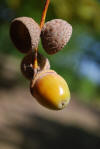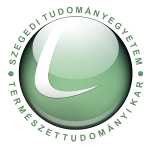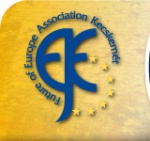| Kecskemet Arboretum Herbs Study trail | |
| About Arboretum |
English Oak / Truffle Oak / Pedunculate Oak - Quercus robur Habitat
Habit and Form
Summer Foliage
Flowers
Fruit
Bark
Usage: Landscape Use: ˇ shade tree or a specimen tree in larger landscapes ˇ best suited for parks and other large area ˇ the wood has been a valuable commodity for centuries ˇ its hardwood has been used in ship building, wine barrels, and furniture. ˇ acorn was eaten by pigs ˇ its oil does not dry ˇ nutgall with iron was used for making ink ˇ its bark contains tannic acid
In times of old the acorn was a valued source of food for livestock, and particularly for feeding swine.
Medicinal uses:
The distilled water of the Oak leaf bud can be taken internally or used externally to relieve minor inflammations. Bruised Oak leaves applied externally to wounds and haemorrhoids will also help reduce and ease inflammation. The bark of the Oak tree is the part most used in medicine, it being a tonic, astringent and antiseptic. As with other astringents it is also recommended for use in agues and haemorrhages. The medicinal qualities of the bark can be extracted both by water and by spirit. As a decoction it has a strong astringent and bitter taste with a slightly aromatic odour. To make it, collect some bark (best in the spring April or May) from some young trees and dry it in the sun before chopping it. It can then be taken in a wineglass measure or dose, and used as a gargle mouthwash for chronic sore throats, or applied locally to bleeding gums and piles. It is also used in hot baths for chilblains and frostbite or as a hot compress for inflamed glands, hernias and haemorrhoids. A stronger decoction taken by the spoonful is useful in chronic diarrhoea and dysentery. Oak bark when finely ground and powdered makes a remedial snuff that can be inhaled to arrest nosebleeds. It has also proved beneficial in the early stages of consumption. Sprinkled onto bed sheets it will help to alleviate bedsores. A pinch of powered Oak bark mixed with honey and taken in the mornings will help and aid ladies with menstrual problems. Ground and powdered acorns taken with water was considered a useful tonic for diarrhoea, and a decoction of acorns and Oak bark made with milk, was used as an antidote to poisonous herbs and medicines. In old times, the thin skin of the acorn was used to cover open cuts or wounds, and ground and powdered acorns taken in wine was considered a good diuretic. Oak bark tea is very good in the treatment for sore throats or inflamed gums, as well as the treatment of scrapes, cuts and burns externally. Oak bark tea is effective because of the high levels of compounds such as tannin and quercin. Interestingly, swellings on the twigs (galls caused by parasitic insects) contain as much as three times the amount of these compounds as healthy branches. This may be caused by the reaction of the tree in an attempt to defend itself. Bark and galls are used in tanning and also in dyeing, the colour produced being dependent on the mordant.
|
| Study Trail's Herbs | |
| Herbal basics | |
| Resources | |
| Impressum | |
| Gallery | |
 |
|
|
Sponsors: |
|




